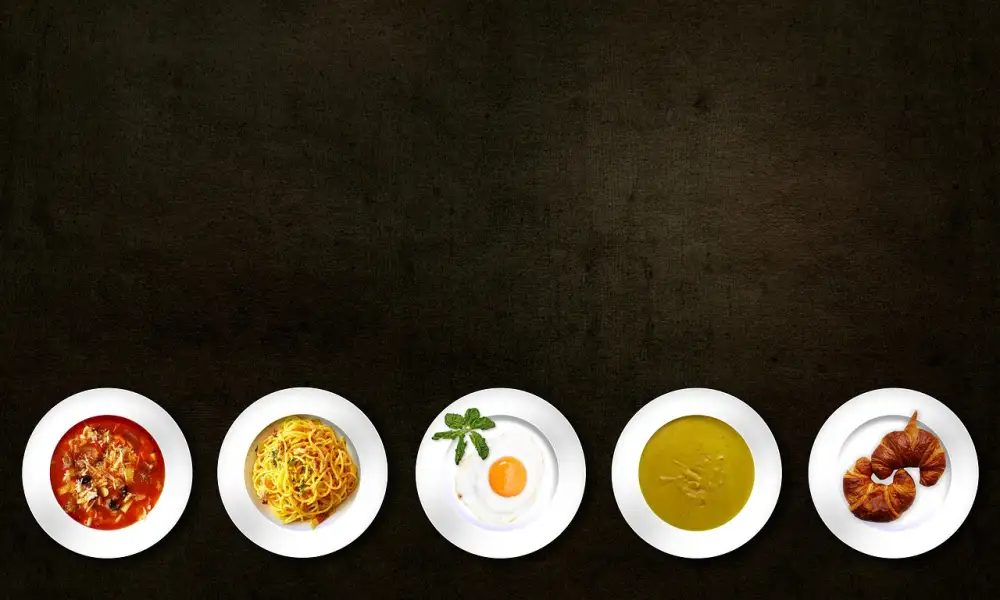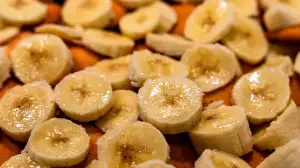Indulge in the Irresistible Delight of Croissants: A French Pastry Masterpiece

- Introduction to the croissant: A delectable French pastry
- History of the croissant: From Vienna to France
- Ingredients used in making croissants: Flour, butter, yeast, and more
- The art of making croissants: Layering and shaping the dough
- Different types of croissants: Classic, chocolate-filled, almond, and more
- Pairing croissants with beverages: Coffee, tea, and hot chocolate
- Croissants in popular culture: Symbol of French cuisine
- Tips for enjoying croissants: Freshness, reheating, and storage
- Exploring variations of croissants: Cronuts, pain au chocolat, and more
- Conclusion: Indulge in the buttery goodness of a croissant
Introduction to the croissant: A delectable French pastry
The croissant, a delectable French pastry, is a true delight for the senses. Its flaky layers and buttery aroma make it irresistible to pastry lovers around the world. Originating from France, this iconic pastry has become synonymous with French cuisine and is enjoyed by people of all ages. Whether enjoyed plain or filled with chocolate or almonds, the croissant is sure to transport you to a world of culinary magic.
History of the croissant: From Vienna to France
The history of the croissant can be traced back to Vienna, Austria. In the 17th century, Viennese bakers created a pastry known as "kipfel," which resembled a crescent moon. When Marie Antoinette, an Austrian princess, married Louis XVI and became the Queen of France in 1770, she brought this pastry with her. The French bakers were inspired by its shape and renamed it "croissant," meaning crescent in French. Since then, the croissant has become an iconic symbol of French cuisine and a beloved treat worldwide.
Ingredients used in making croissants: Flour, butter, yeast, and more
When it comes to creating the perfect croissant, the ingredients used play a crucial role in achieving that flaky, buttery goodness. The key components include flour, butter, yeast, and more. High-quality all-purpose flour is typically used for its protein content, which helps create structure and texture. Butter is another essential ingredient, providing richness and flavor. It's important to use cold butter and incorporate it into the dough through a process called lamination. Yeast adds lightness and helps with the rising of the dough. Other ingredients such as sugar, salt, and milk may also be included to enhance the taste and texture of these delectable pastries.
The art of making croissants: Layering and shaping the dough
The art of making croissants involves a meticulous process of layering and shaping the dough. To achieve the flaky and buttery texture that croissants are famous for, the dough is rolled out into a thin rectangle. A generous amount of butter is then spread over the dough, which is then folded into thirds, creating layers. This process is repeated multiple times to create even more layers. Finally, the dough is shaped into a crescent shape and left to rise before being baked to perfection. The result is a pastry with a delicate balance of crispiness and softness that melts in your mouth.
Different types of croissants: Classic, chocolate-filled, almond, and more
Croissants come in various delightful flavors, each offering a unique twist to the classic pastry. The most popular type is the classic croissant, with its buttery and flaky layers that melt in your mouth. For chocolate lovers, there's the chocolate-filled croissant, where rich and gooey chocolate is tucked within the layers of dough. Another delicious variation is the almond croissant, topped with sliced almonds and filled with almond cream for a nutty and sweet flavor. Other types include ham and cheese croissants, raspberry-filled croissants, and even savory options like spinach and feta croissants. With so many choices available, there's a croissant to suit every taste preference.
Pairing croissants with beverages: Coffee, tea, and hot chocolate
Pairing croissants with beverages is a delightful way to enhance the experience of this French pastry masterpiece. The buttery, flaky texture of a croissant pairs perfectly with a warm cup of coffee, creating a harmonious blend of flavors. The rich and bold taste of coffee complements the subtle sweetness of the croissant, making it an ideal choice for breakfast or brunch. For those who prefer tea, a fragrant cup of Earl Grey or English Breakfast tea can provide a refreshing contrast to the indulgent croissant. The combination of the tea's floral notes and the croissant's buttery goodness creates a balance that is both comforting and satisfying. And let's not forget about hot chocolate - its velvety smoothness and creamy taste make it an irresistible companion to a freshly baked croissant. Whether you choose coffee, tea, or hot chocolate, pairing it with a croissant is sure to elevate your culinary experience to new heights.
Croissants in popular culture: Symbol of French cuisine
Croissants have become an iconic symbol of French cuisine in popular culture. Their flaky and buttery texture, combined with their distinctive crescent shape, has made them instantly recognizable and highly sought after around the world. From movies to advertisements, croissants often make appearances as a representation of French sophistication and culinary excellence. They are often associated with leisurely breakfasts at quaint cafes in Paris or enjoyed as a decadent treat during afternoon tea. The croissant's presence in popular culture only further solidifies its status as a beloved pastry that embodies the essence of French gastronomy.
Tips for enjoying croissants: Freshness, reheating, and storage
When it comes to enjoying croissants, freshness is key. Ideally, they should be consumed on the day they are baked. If you can't finish them all, store them in an airtight container at room temperature for up to 2 days. To reheat croissants, preheat your oven to 350°F (175°C) and warm them for about 5 minutes. Avoid using the microwave as it can make them soggy. For longer storage, freeze the croissants in a sealed bag and thaw them overnight before reheating. Remember, nothing beats the taste of a freshly baked croissant!
Exploring variations of croissants: Cronuts, pain au chocolat, and more
When it comes to croissants, the possibilities are endless. Over the years, bakers and pastry chefs have experimented with different variations of this beloved French pastry. One such variation is the cronut, a hybrid of a croissant and a doughnut. This delectable treat has gained popularity for its flaky layers and sweet fillings. Another popular variation is the pain au chocolat, which features a strip of chocolate in the center of the croissant. Other variations include savory options like ham and cheese or spinach and feta. No matter what variation you choose, one thing is certain - each bite will transport you to culinary heaven.
Conclusion: Indulge in the buttery goodness of a croissant
In conclusion, the croissant is a true masterpiece of French pastry. Its flaky layers, buttery taste, and delicate texture make it an irresistible delight for any food lover. Whether enjoyed plain or filled with chocolate or almonds, each bite is a heavenly experience. Pair it with a cup of coffee, tea, or hot chocolate for the perfect breakfast or afternoon treat. So go ahead and indulge in the buttery goodness of a croissant – you won't be disappointed!
Published: 14. 11. 2023
Category: Food



